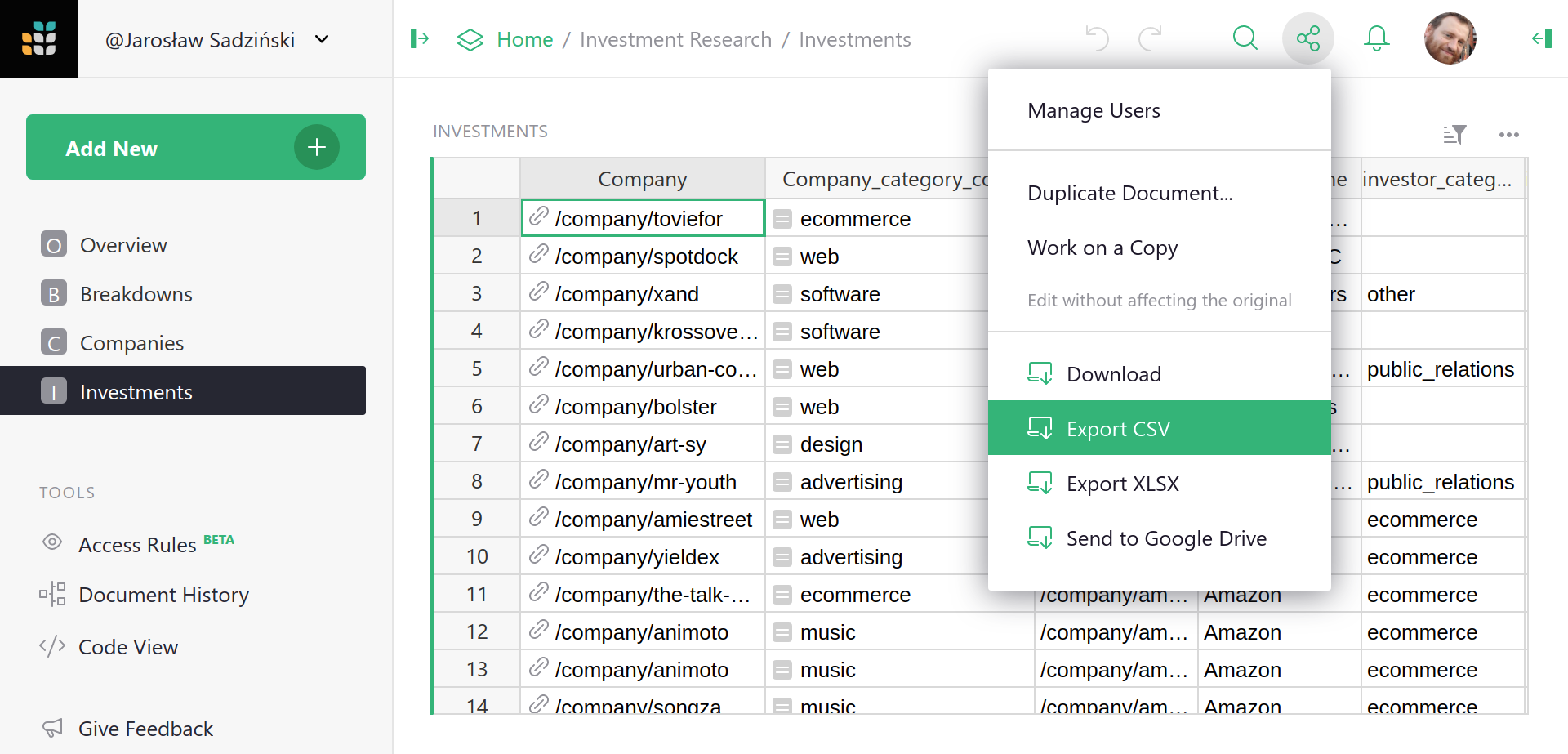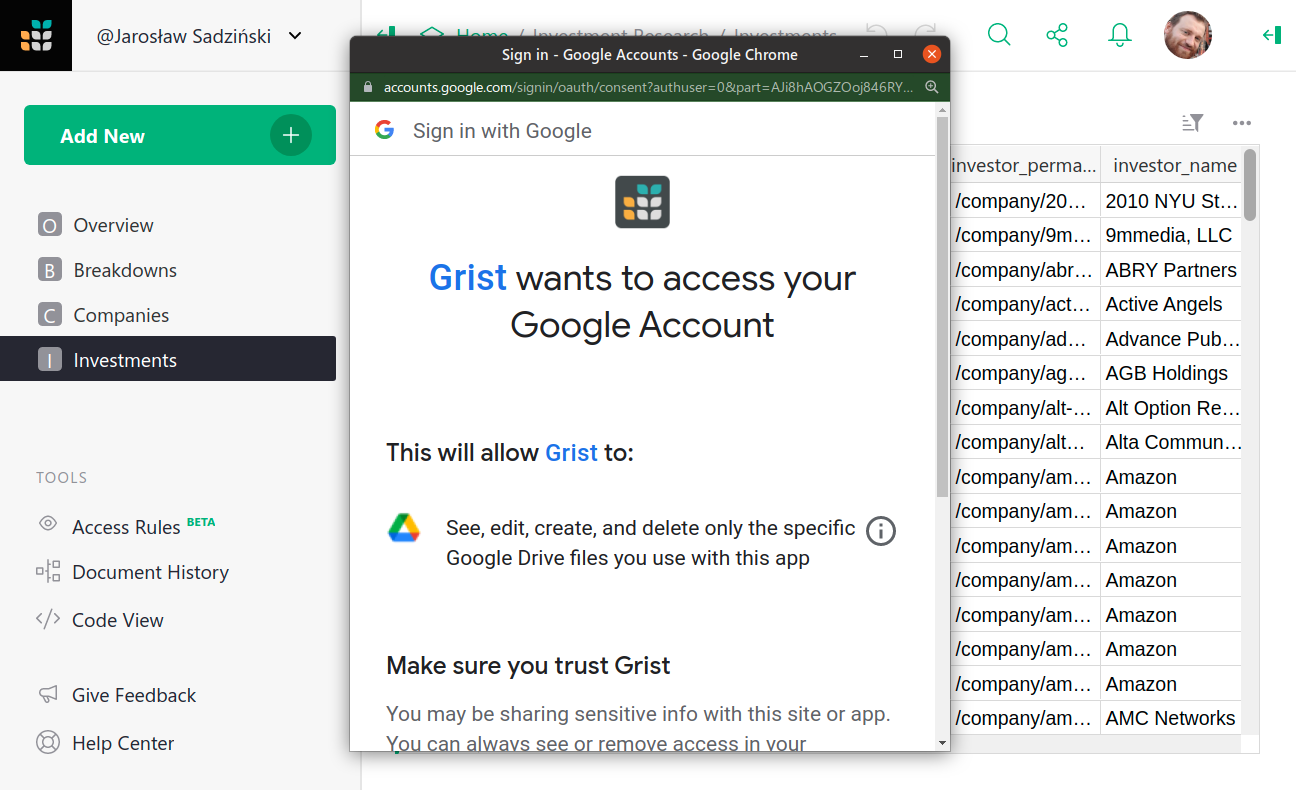Exporting#
Exporting a table#
If you want to export a table to another spreadsheet or database, one option is to export that table in CSV format, a common interchange format for data. To do this, open your document to the desired table. Then click the sharing icon () on the top right of the screen. It opens the menu with sharing and export options. Select “Export CSV”.

Your browser will then download a CSV file containing a header row naming your columns, excluding any hidden columns, followed by all the rows of data in the table in text format.
When on a page with multiple page widgets, “Export CSV” will export only the data in the currently-selected widget, to export all your data use “Export XLSX” option.
Exporting a document#
If you want to export all tables to Excel format, click the sharing icon () on the top right of the screen and select “Export XLSX”.
Your browser will then download an Excel file, where each table is a separate sheet containing all rows, without any filters applied. To use this option you need to have full read access for all tables in a document.
Sending to Google Drive#
If you want to export a document to Google Drive as a Google Sheet file, click the sharing icon () on the top right of the screen and select “Send to Google Drive”.
Grist will first ask you to log in to your Google Account (or use an account you already signed in) and then for permission to create a file in your Google Drive. Grist will be able to create new files and manage them but will not be able to access any other files in your drive.

Once you accept the permission request, Grist will export your document to an Excel file and then save it in your Google Drive as a Google Sheet file. To use this option, you need to have full read access for all tables in a document.
Backing up an entire document#
Grist makes regular backups of documents automatically, as described in Automatic Backups. You can also make manual backups by saving copies of documents in your Grist account.
In addition, Grist documents can be downloaded in their entirety as an SQLite database
file with a .grist extension. SQLite is a popular database format.
The downloaded file will contain all your tabular data, any attached
files within those tables, metadata about your tables, pages, and
widgets, and a history of recent modifications of the document. It
will not contain information about who the document is shared with.
To download a Grist document, click the sharing icon () on the top right of the screen, and select “Download”.

Restoring from backup#
A downloaded .grist file can be uploaded again to provide an exact copy of the
original. To upload the file, open the team or personal site where
you want to place it, and optionally select also a workspace.
Then click on “Add New” in the top left, and select “Import document”.

You may also import CSV and Excel files as new Grist documents this way.